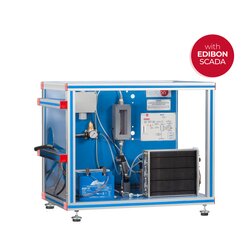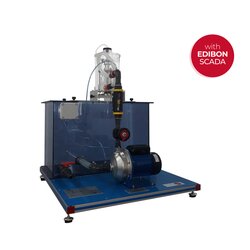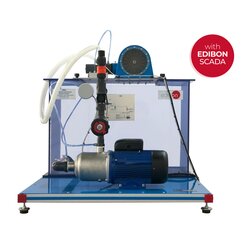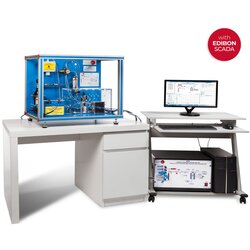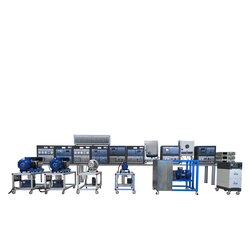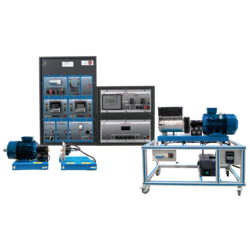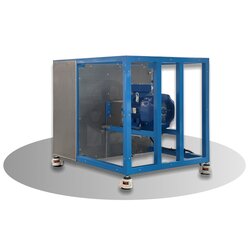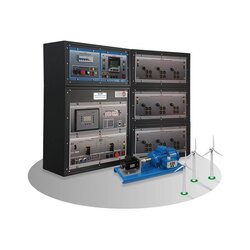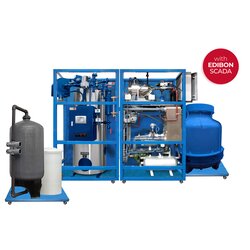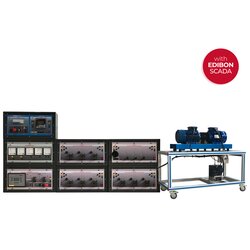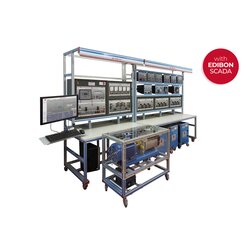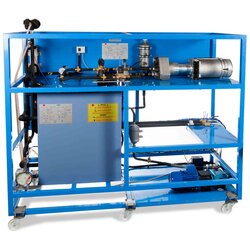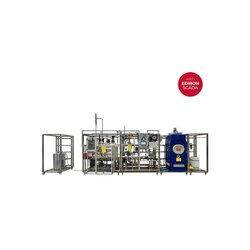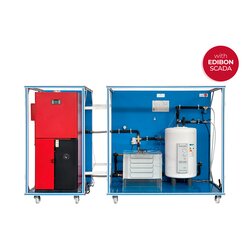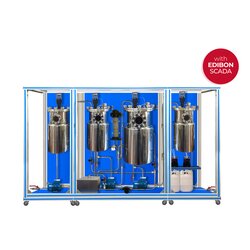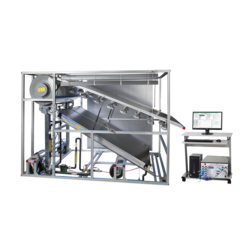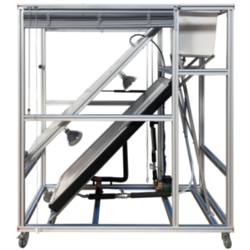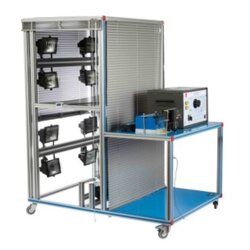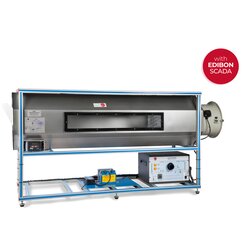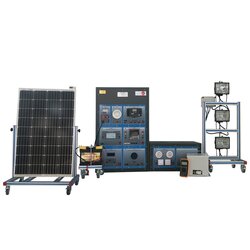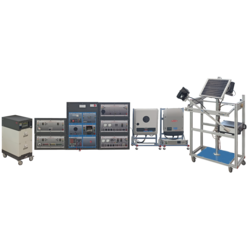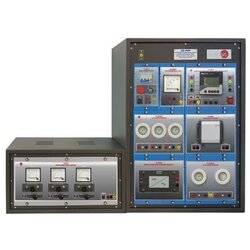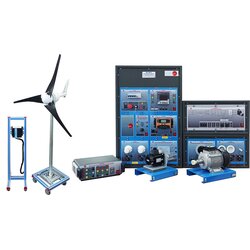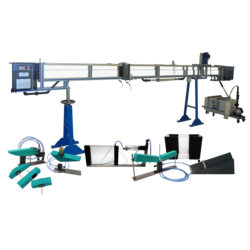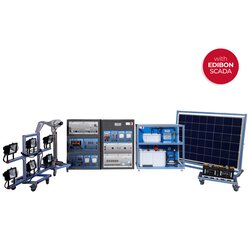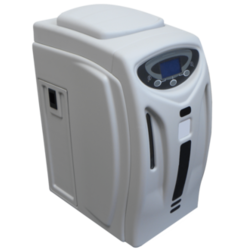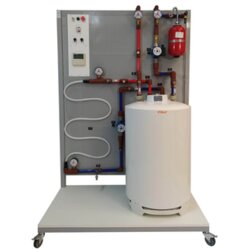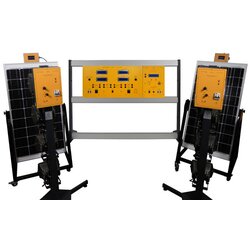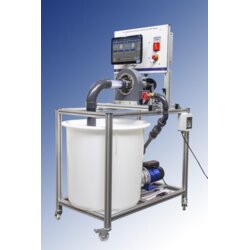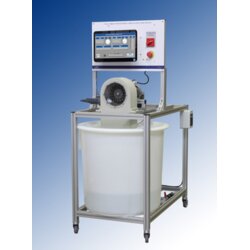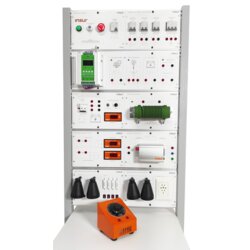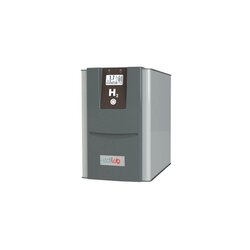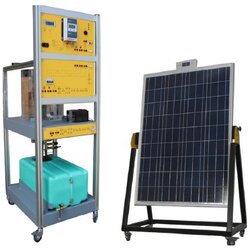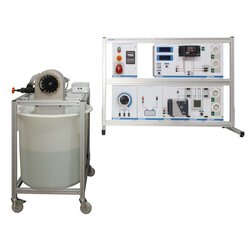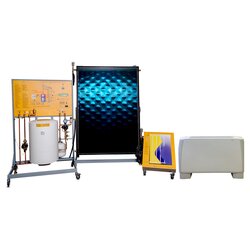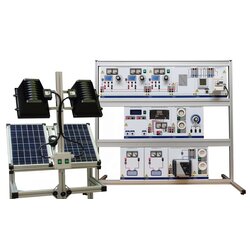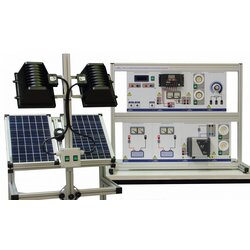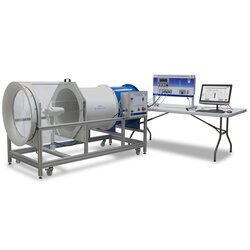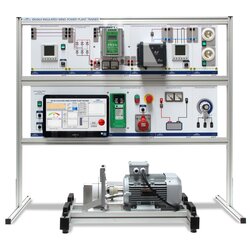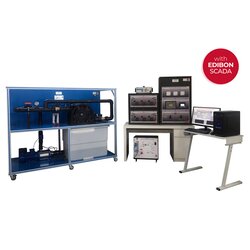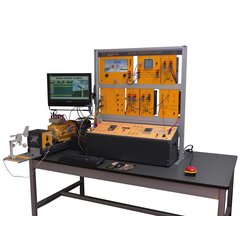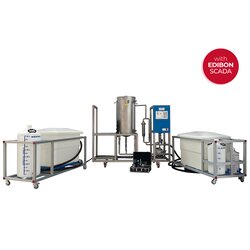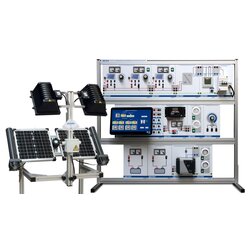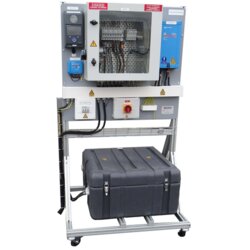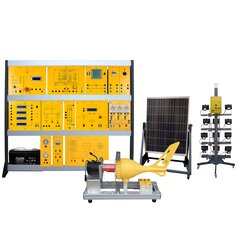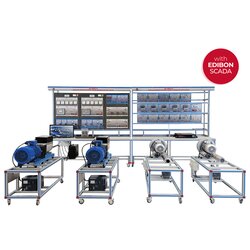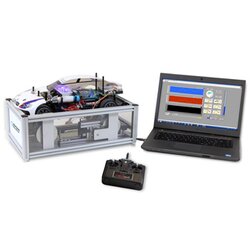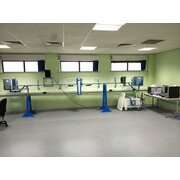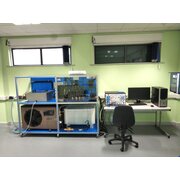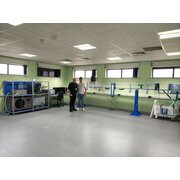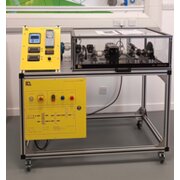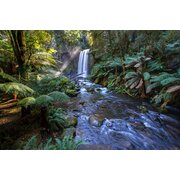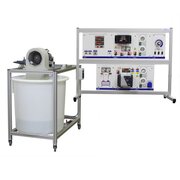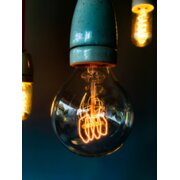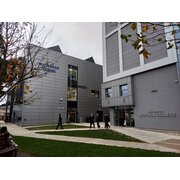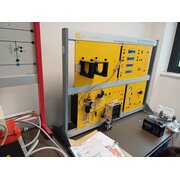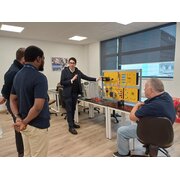Renewable Energy Lab Equipment
Sort by
Learn More About Renewable Energy Lab Equipment
In this section you will learn about new, clean, green and renewable energy. Why we should teach it, when and how. We will cover the tools, equipment, products, systems and solutions for teaching renewable energy in a laboratory, classroom or training center.
To quickly jump between different topics, use the menu on the left – happy reading!
Why should we teach Renewable Energy?
Earth’s climate is changing because of human influence, mostly from our use of non-renewable energy sources such as oil, coal, and natural gas. Climate change has a negative impact on biodiversity, which is what makes our earth habitable for humans.
In order not to increase global warming and risk biodiversity collapse, we need to decrease human impact on climate change. This means that we need to urgently adopt towards getting our energy from renewable sources, such as wind, solar and water.
To keep global warming to a minimum, we need to swiftly implement renewable energy and energy storage applications in masse across many different industry sectors. Such a transformation requires both knowledge and skills on multiple levels of society. This is why education and training for renewable energy might be one of the most important challenges to achieve these necessary changes throughout the first half of the 21st century.
The topic of renewable energy is crucial for humans not only to survive, but to thrive. Quite an important topic, don’t you think?
When should we teach Renewable Energy?
Most school systems and curriculums touch upon the concepts of sustainability and renewable energy in both social and natural sciences as early as elementary school, and then go deeper on these topics in middle school and high school.
- Vocational Training: Since hard skills associated to installation and maintenance of renewable energy generation systems are increasingly important, there has been a large push for greening Technical Vocational Education and Training (TVET). In 2017 UNEVOC published guidelines for Greening TVET, which has been adopted by many governments to support training, upskilling, and reskilling of the workforce.
- Higher Education: Nearly nowhere in higher education you can find a bachelors or master’s program in natural sciences or engineering which does not touch upon sustainability and renewable energy somehow, even among the programs traditionally associated to non-renewable energy. Sustainability is also becoming a hot topic in various fields of social sciences.
What is Renewable Energy Lab Equipment?
Renewable energy lab equipment refers to didactic systems used for teaching renewable energy in a classroom, laboratory, training center or similar. Such training systems normally include hardware, software and content for a teacher, educator or professor to use in order to train students on technologies such as solar energy, solar thermal, wind energy, hydrogen fuel cells etc. Mostly such technical training equipment is used in technical vocational education and training (TVET) and engineering education.
While all different technical training systems aim to teach the students hard skills, some are more effective in their knowledge transfer than others. There are many different solutions, and they require different levels of prior knowledge, as well as aim towards different learning outcomes. Therefore, it is crucial to do proper research, for anyone looking to acquire technical training systems.
What types of Renewable Energy Lab Equipment Exists?
There are various ways to classify technical training systems and teaching equipment with the aim to teach skills and knowledge for renewable energy.
- Energy source: Perhaps the most obvious way to classify renewable energy is by its source: i.e., solar, wind, bio energy, water, geothermal etc.
- Technology: Another quite intuitive way is to sort by the specific technologies for sourcing energy. For example, the three primary technologies for harnessing solar energy are Photovoltaics (PV), Concentrated Solar Power (CSP), and Solar Heating & Cooling (SHC) Systems. Similarly, there are two different types of wind turbines, mainly horizontal axis and vertical axis, or three different types of bio energy technologies, thermochemical processes, biochemical processes etc.
- Real vs. Simulated: Some equipment producers offer real industrial installments of solar PV or wind turbines on the roof of a training facility with live data capture etc. while others offer fully contained systems in which the energy sources are simulated. Here are two different examples: a Real System and a Simulated System, both with their pros and cons.
- Conceptual vs. Skills based: Another way to think about training systems is to classify them based on the intended learning output. In higher education these systems often put emphasis on teaching engineering or science concepts while in vocational or technical training we find more focus on hard skills such as installment, maintenance and trouble shooting.
Benefits of using Renewable Energy Lab Equipment
Using hands-on training systems for teaching technical subjects has many benefits as opposed to learning everything in theory. Most referred-to benefits are better content retainment, increased student engagement, improved critical thinking, better understanding of real-world applications and situations, and also increased workplace safety.
Who uses Renewable Energy Training Systems?
Anyone who in their profession must understand renewable energies, benefits from hands-on learning with renewable energy training systems. Training through hands-on equipment increases real world connections and student engagement while it improves content retainment and critical thinking.
- Schools: Many schools already at middle and high school level implement hands-on equipment into their classrooms, workshops, FabLabs, and laboratories. The best programs take a Problem Based Learning (PBL) approach where they break down and connect across subject specific silos. An exemplary STEAM program mainly based on Sustainability and Renewable Energy is the Horizon Grand Prix, a competition in which high school students build and compete in national leagues with their own hydrogen electric remotely controlled cars.
- Vocational Training Centers: These are run by regional authorities, chambers of commerce or unions, for the purpose of upskilling and reskilling existing workforce. Implementation of hands-on didactic training equipment for these purposes are key to foster the hard skills necessary for employment. The energy industry is a main recruiter from these types of programs but also manufacturing, automotive, aerospace, and residential construction is looking for employees with skills in renewable energy.
- Colleges & Polytechnics: Many employers are increasingly looking at hard skills rather than accolades when they are recruiting. This makes diplomas and certificates of course completions ever more relevant, something which often can be received through the national networks of community colleges or polytechnic institutions.
- Engineering Faculties: Higher technical education is often associated to both education and research which prefers theoretical knowledge above practical skills. The field of Renewable Energy in higher education is touched upon by material sciences, power engineering, informatics, systems engineering etc. and all these areas uses hands-on equipment, scientific instruments and training systems.
- Corporate Training Centers: Manufacturers all around the word need a technically qualified workforce and many run their own training centers, alternatively through joint ventures and collaborations with local authorities or non-for-profits. Highly focused on effective training and the Return-On-Education (ROE), these training centers often implement state of the art learning technologies and training systems.
Best ways to search, compare and evaluate Training Equipment
The acquisition process of didactic technology for a new training center can be quite daunting to go through, a few examples per below:
- First, there exists more than 250 different producers worldwide, manufacturing technical training systems, how to find the 3-5 best solutions in such a plethora of choices?
- Second, how does one know what the didactic impact is of a specific training system? What is the proof of learning outcomes? Can I find independent sources vouching for the efficacy of this didactic system?
- Third, how do I know that all the relevant parameters of a product meet my needs? How do I easily compare different parameters of different solutions?
- Fourth, since didactic training equipment are priced per order and differ depending on the customer, how can I get a competitive price on the product I am interested in?
Luckily Edquip has built a solution addressing all these problems, above you can easily search products by category, use different filters, and find products from various producers from all around the world, in minutes rather than hours or days.
Each product has a product page with descriptions, technical specifications, high quality pictures, video, attributes, product reviews etc. Here you can read about how other educators have used this product, and whether they recommend it to their peers.
Any product can be added to the comparison page, this becomes very powerful when comparing the underlying parameters of each product. If you have added between 3-5 products you can also request customized quotations for these products straight from the producers.
We collect open information with each quotation request, which will help the producer customize their quotation for you. No identifiable information such as your name, contact details or similar will be shared with the producers without your approval.
Now, how can we help you find what you’re looking for? Start searching above!
